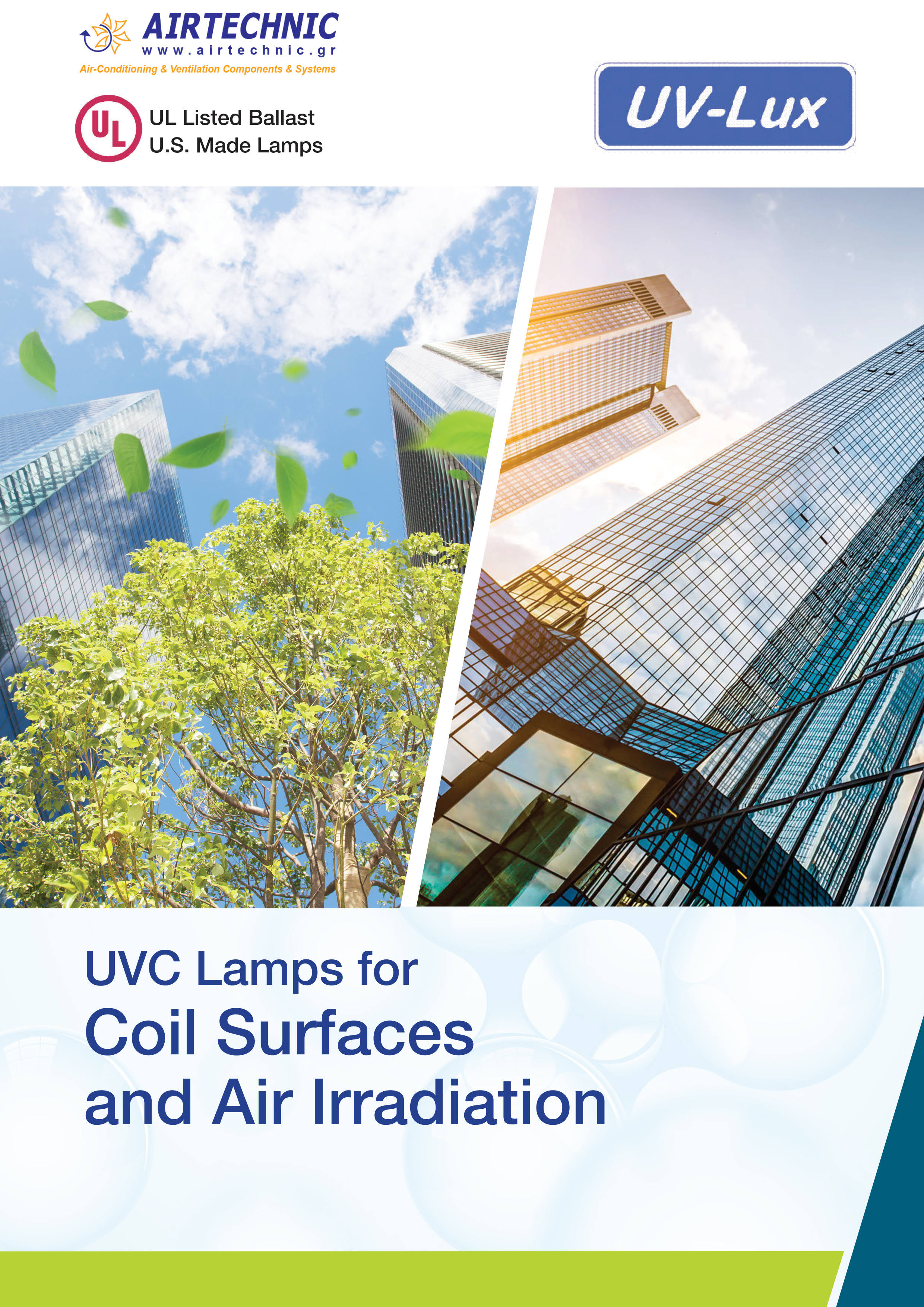UVC RADIATION
Antimicrobial Protection
UV radiation lies in the electromagnetic spectrum between visible light and X-rays and is sometimes described as invisible radiation. Antimicrobial protection is achieved by radiation at 254 nanometers, of the visible light spectrum and is called UVC radiation. UVC photons have just the right wavelength to damage the DNA of microorganisms.
UVC radiation is safe and tested and is produced by lamps, similar to fluorescent lamps, and kills bacteria, viruses and mold.
UVC radiation penetrates the outer cellular membrane of the microorganism, passes through the cellular body, reaches the DNA and changes the genetic material. Without the presence of chemicals the microorganism is destroyed and unable to multiply.
Tests, in various facilities, have shown that irradiation with UVC lamps can reduce the microorganisms that have accumulated on the surface of the cooling elements by 90%. For this reason, UVC lamps are often specified in both new building constructions and renovations of older ones and aim to reduce pollutant particles, reduce worker absenteeism and the required maintenance of mechanical systems.



